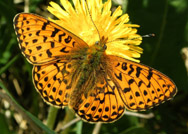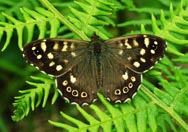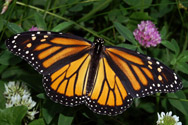Butterfly

Needle Case
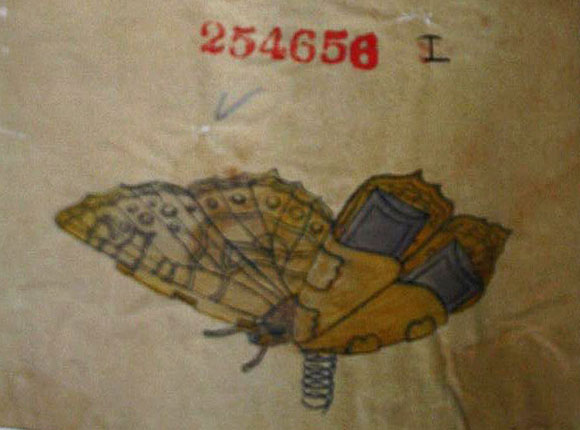
Design Representation
Design Details
Needle Case Type: |
Figural |
Patent/Registered to: |
William Avery & Son - Redditch |
Patent/Design Representation #: |
Ornamental Class1: Metal: #254656 |
Patent/Design Registration Date: |
August 4, 1871 |
Location of Patent/Design Registration: |
The National Archives (TNA) - Kew, UK |
Reference #: |
TNA Representation - BT 43/30/254656 |
Dimensions: |
12.3 x 6 x 1.2 |
Material: |
Brass |
Name Variations: |
a) W. Avery & Son - Redditch |
Other Variations: |
Nickel-silver version (the sole source of this information is Horowitz and Mann as no example of this needle case in nickel-silver has been seen by the authors of this website) |
Additional Photographs

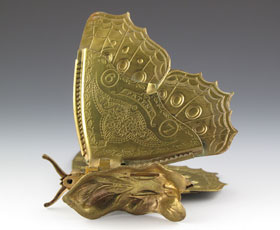
Back and side views
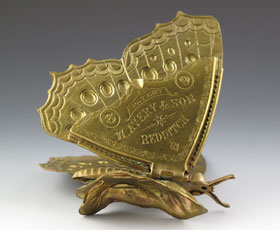
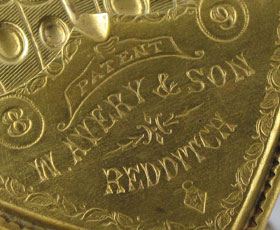
Side view and Avery signature detail
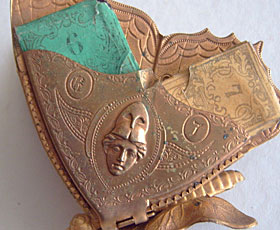
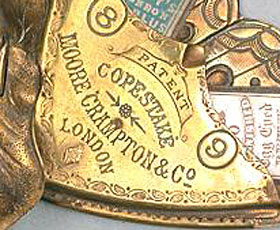
Minerva head on one wing with the Copestake signature detail on the other wing (photos from eBay)
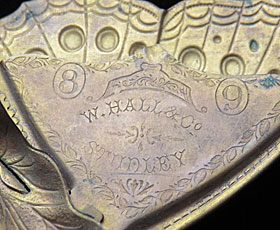
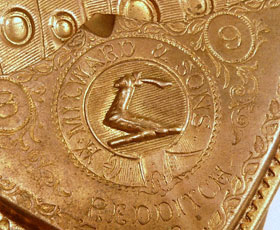
Hall signature detail and Milward signature detail (photos from eBay)
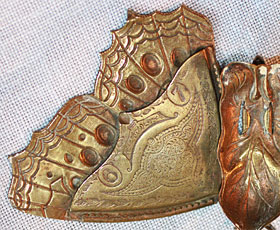
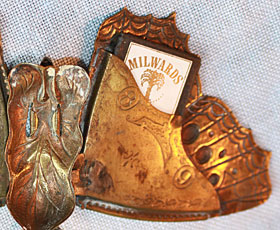
Unmarked detail left side and right side (photos courtesy of Sandi Falconer)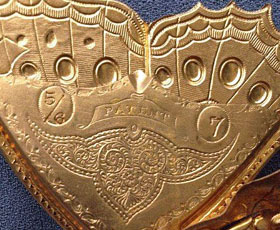
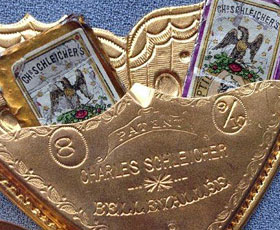
Back with different needle packet sizes 5/6 and 7 on one side and 8 and 9/10 with Charles Schleicher signature detail on the other side and Schleicher needle packets (photos courtesy of Norma Sue Kirkpatrick)
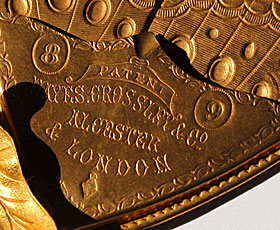
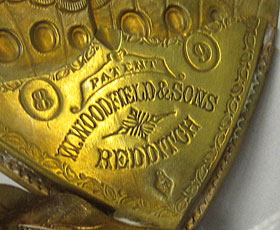
Back with Hayes, Crossley & Co, Alcester & London signature detail (photo courtesy of Veronique de Sousa Andrade) and W. Woodfield & Sons signature detail (photo courtesy of the Winterthur Museum Collection)
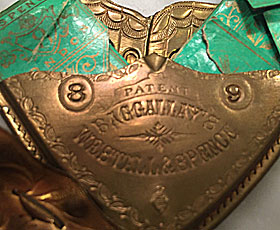
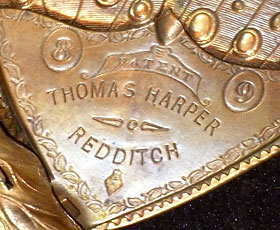
Back with Baggallays signature detail (photo courtesy of Tricia Maddox) and back with Harper signature detail (photo courtesy of Gale Ebersole)
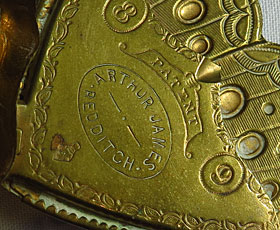
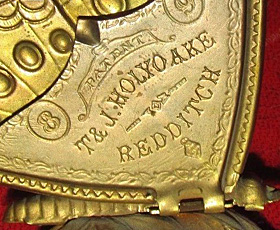
Back with James signature detail (photo courtesy of Clarice Birch) and Holyoake signature detail (photo from eBay)
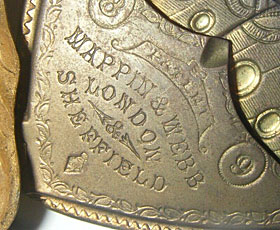
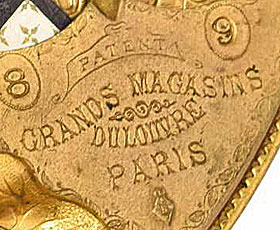
Back with Mappin & Webb signature detail (photo from eBay) and back with the Grands Magasins signature detail (photo from the salesroom)
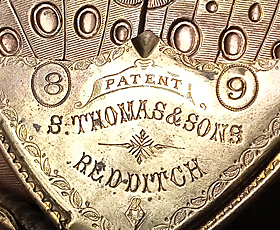
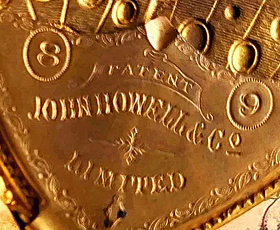
Left: Back with Thomas signature detail (photo courtesy of Hubert Eslampanah). Right: Back with Howell signature detail (photo from ebay).
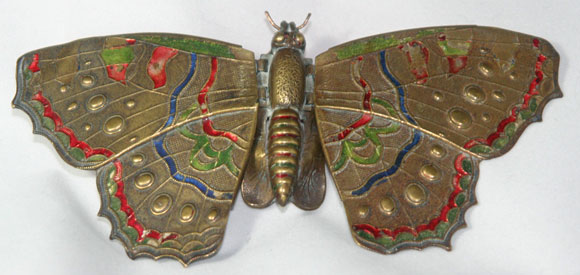
Butterfly with colored highlights (photo from eBay). After carefully examining photographs of this item, it appears the colored parts were added at a later date. If you have this needle case please contact us so we can examine it more closely. Please note the antenna on this item are not original, they were replaced with a small piece of wire. Additional photos might help us to truly authenticate whether the coloring is an original part of this item.
As of February 2025 six additional examples with painted sections were found. Several were discovered while doing an Internet search and a fourth was found in an old Thimble Society newsletter. Then in 2023 one was sold on eBay and in 2025 another was brought to our attention via an email message. All seven of the butterflies with painted sections are slightly different, they are not consistently painted in the same way, which seems to indicate the color was added later. Additional research was undertaken to see if Birmingham or Redditch manufacturers painted other brass items in this manner during the time period in which Avery needle cases were manufactured. No evidence has been found showing painting like this. It seems most likely that this coloring was added at a later date and was not an original part of the these Butterfly needle cases.
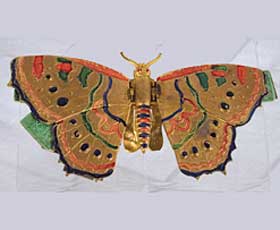
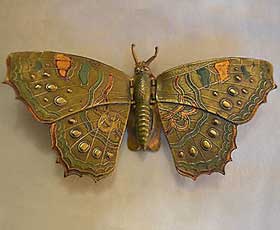
Photographs from the Internet
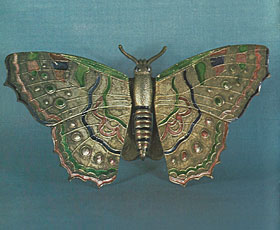
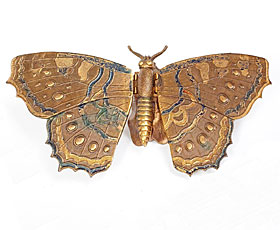
Left: Photograph on the back cover of The Thimble Society of London, Volume 5, Issue 6 - Spring 1995. Right: another photograph from the internet.
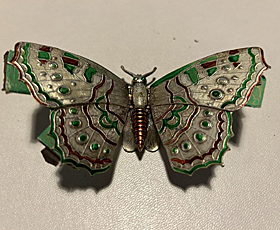
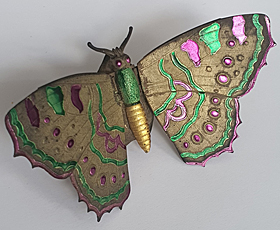
Left: Photograph from eBay. Right: photograph courtesy of Mark Benbow.





